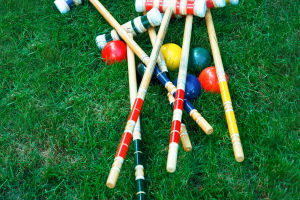Baseball vs. Softball
Baseball and softball are two popular bat-and-ball sports that share many similarities but also have significant differences.
Understanding these differences is essential for appreciating the unique characteristics and challenges of each sport.
1. Field Dimensions
One of the most noticeable differences between baseball and softball is the size of the field. In baseball, the field is larger, with the bases placed 90 feet apart and the pitcher's mound situated 60 feet 6 inches from home plate.
The outfield fences typically range from 300 to 400 feet from home plate, depending on the level of play.
In contrast, softball fields are smaller. The bases are only 60 feet apart, and the distance from the pitcher's mound to home plate is 43 feet for fast-pitch softball and 50 feet for slow-pitch.
The outfield fences in softball are generally between 200 and 300 feet from home plate. These smaller dimensions result in a faster-paced game and different strategic considerations.
2. Equipment
The equipment used in baseball and softball also varies significantly. Baseballs are smaller and harder, with a circumference of approximately 9 inches and a weight of about 5 ounces. Softballs are larger, with a circumference of around 12 inches and a weight of about 6.5 ounces.
The larger size and softer composition of softballs make them easier to hit and catch but also reduce the distance they can be hit compared to baseballs.
Bats used in each sport also differ. Baseball bats are typically longer and heavier, ranging from 32 to 34 inches in length and weighing between 28 and 31 ounces.
Softball bats are shorter and lighter, usually between 32 and 34 inches in length and weighing between 24 and 30 ounces. Additionally, softball bats often have a larger barrel diameter to accommodate the larger ball.
3. Pitching Style
The pitching style in baseball and softball is one of the most distinct differences between the two sports. In baseball, pitchers throw overhand or sidearm, delivering the ball with a windup that allows for high velocity and various pitch types, including fastballs, curveballs, sliders, and changeups.
In softball, pitchers deliver the ball underhand, using a windmill motion in fast-pitch softball or a slower, more controlled motion in slow-pitch. The underhand pitch in fast-pitch softball can still reach impressive speeds, often exceeding 60 miles per hour, but the mechanics and release point differ significantly from baseball.
This difference in pitching style impacts the game's dynamics, with softball pitchers generally having more control and accuracy but less velocity compared to baseball pitchers.
4. Game Duration
The length of a game is another key difference between baseball and softball. A standard baseball game consists of nine innings, with each inning divided into two halves: the top (visiting team batting) and the bottom (home team batting).
Games can last anywhere from two to four hours or more, depending on various factors such as scoring, pitching changes, and pace of play.
Softball games, on the other hand, typically consist of seven innings. The shorter game length contributes to a faster pace and usually results in shorter game durations, often lasting between one and two hours.
This difference in game length can affect strategies, such as pitching rotations and batting order decisions, as well as the overall spectator experience.

